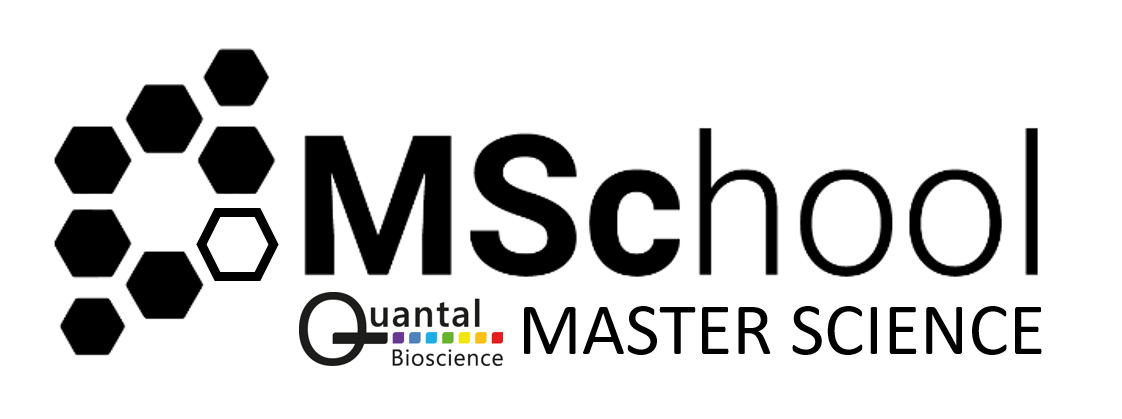OUR MSchool CURRICULUM IS BASED ON THE RECOMMENDED CURRICULUM OF THE AMERICAN SOCIETY FOR MICROBIOLOGY (ASM) FOR UNDERGRADUATE STUDENTS IN MICROBIOLOGY, AND EMPHASISES BOTH SCIENTIFIC KNOWLEDGE AND WORKING SCIENTIFICALLY SKILLS, IN LINE WITH THE NSW DEPARTMENT OF EDUCATION'S SCIENCE CURRICULA FOR PRIMARY AND SECONDARY SCHOOL STUDENTS
Microbiology Knowledge
Evolution

1. Cells, organelles (e.g. mitochondria and chloroplasts) and all major metabolic pathways evolved from early prokaryotic cells
2. Mutations and horizontal gene transfer, with the immense variety of microenvironments, have selected for a huge diversity of microorganisms


3. Human impact on the environment influences the evolution of microorganisms (e.g. emerging diseases and the selection of antibiotic resistance)
4. The traditional concept of species is not readily applicable to microbes due to asexual reproduction and the frequent occurrence of horizontal gene transfer


5. The evolutionary relatedness of organisms is best reflected in phylogenetic trees
Cell structure and function

6. The structure and function of microorganisms have been revealed by the use of microscopy (including bright fields, phase contrast, fluorescent and electron)
7. Bacteria have unique cell structures that can be targets for antibiotics, immunity and phage infection


8. Bacteria and Archaea have specialised structures (e.g. flagella, endospores and pili) that often confer critical capabilities
9. While microscopic eukaryotes (for example, fungi, protozoa and algae) carry out some of the same process as bacteria, many of the cellular properties are fundamentally different


10. The replication cycles of viruses (lytic and lysogenic) differ among viruses and are determined by their unique structure and genomes
Metabolic pathways

11. Bacteria and Archaea exhibit extensive, and often unique, metabolic diversity (e.g. nitrogen fixation, methane production, anoxygenic photosynthesis)
12. The interactions of microorganisms among themselves and with their environment are determined by their metabolic abilities (e.g. quorum sensing, oxygen consumption, nitrogen transformations)


13. The survival and growth of any microorganism in a given environment depends on its metabolic characteristics
14. The growth of microorganisms can be controlled by physical, chemical, mechanical or biological means

Information flow and genetics

15. Genetic variations can impact microbial functions (e.g. in biofilm formation, pathogenicity and drug resistance)
16. Although the central dogma is universal in all cells, the processes of replication, transcription and translation differ in Bacteria, Archaea and Eukaryotes


17. The regulation of gene expression is influenced by external and internal molecular cues and / or signals
18. The synthesis of viral genetic material and proteins is dependent on host cells


19. Cell genomes can be manipulated to alter cell function
Microbial systems

20. Microorganisms are ubiquitous and live in diverse and dynamic ecosystems
21. Most bacteria in nature live in biofilm communities


22. Microorganisms and their environment interact with and modify each other
23. Microorganisms, cellular and viral, can interact with both humans and nonhuman hosts in beneficial, neutral or detrimental ways

Impact of microorganisms

24. Microbes are essential for life as we know it and the processes that support life (e.g. in biogeochemical cycles and plant and / or animal microbiota)
25. Microorganisms provide essential models that give us fundamental knowledge about life processes


26. Humans utilise and harness microorganisms and their products
27. Because the true diversity of microbial life is largely unknown, its effects and potential benefits have not been fully explored

Microbiology Lab Skills
Laboratory safety and aseptic technique

1. Laboratory safety must be practised at all times in the microbiology laboratory
2. Since microbes are all around us, and on us, aseptic technique is crucial to ensure that unwanted microbes do not contaminate microbiology experiments


Would you like to work with real scientists
in a real research laboratory?!
MSchool runs at our Quantal Bioscience
research laboratory, located in Castle Hill, Sydney, Australia.
-
Sydney, Australia
-
-
(02) 8000 3720
We acknowledge the Bidjigal people of the Darug Nation who are the traditional owners of
the land on which we work, and pay our respects to Elders past, present and emerging.
© Copyright Quantal Bioscience. All Rights Reseved.